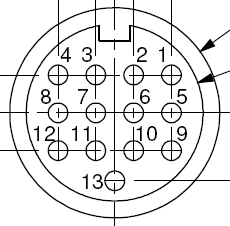Notes
Running notes for the moment
EQUIPMENT
Godin Guitars Hondoras MAHOGANY NECK- ERGOCUT (rolled) EBONY FiNGERBOARD- symetrical 16” ( 4 0 6 MM) FINGERBOARD RADIUS- 2 5 1/2’ ( 6 4 7 . 5 MM) SCALE- 1 11/16” (43 MM) NUT WIDTH-
Mooradian Custom Shop LM Leather Products Guitar Straps Smith Pro Formula Guitar Polish Hercules Stands Schaller S-Lock Strap Pins Graphteach Nuts RMC Poly-Drive - RMC Acoustic System RMC’s unique acoustic pickups feature individual sensors for each string. This allows perfect string-to-string balance and virtually no cross-talk so each note speaks clear and true. Also, the individual RMC sensors provide exceptionally accurate MIDI tracking. Stewart-MacDonald FU Tone Noiseless Whammy Springs
DEFINITIONS
Magnetic Pickup - A simple mechanism based on a magnetic field that induces a current in a coil in that field. The pickup converts string vibration into electrical energy, usually by means of a permanent magnet, or six magnetic polepieces, surrounded by a wire coil.
Hexaphonic Pickup - A guitar pickup with a discrete output for each of the six strings of a standard guitar. This arrangement permits separate processing for each string. A hexaphonic pickup attached to a converter can sense the pitch coming from individual strings for conversion into MIDI note messages.
13-Pin Connection - An output of the guitar can be connected to a guitar-to-MIDI converter, a guitar synthesizer, or a guitar modeling system. The 13-pin connector carries individual output from each of the six strings, the signal from the guitar’s regular pickups, and several control signals. If the connected device can provide it, phantom power too.
Note that the 13-pin connection itself does not carry MIDI information. An ancillary box must be used to convert the analog signals created by the hex pickup into MIDI note and control data.
1
2
3
4
5
6
7
8
9
10
11
12
13
14
15
PIN Diagram
Pin 1 – signal 1
Pin 2 – signal 2
Pin 3 – signal 3
Pin 4 – signal 4
Pin 5 – signal 5
Pin 6 – signal 6
Pin 7 – output from regular guitar pickups
Pin 8 – synthesizer volume control signal
Pin 9 – not used/no connection
Pin 10 – synthesizer switch control signal (normally used for preset down)
Pin 11 – synthesizer switch control signal (normally used for preset up)
Pin 12 – +7 volts power
Pin 13 – –7 volts power
A de facto standard devised by Roland for connecting guitars and basses equipped with a hex pickup to a guitar synthesizer. The cable carries the audio signal from each of the 6 individual coils of the hex pickup to the synth for processing and analysis. The interface also provides +/- 7V DC power to the guitar’s electronics. Additionally, it can carry a few control signals from controls on the guitar, and a mono signal from the guitar’s conventional pickups.
Roland 13-pin DIN socket
| DIN pin | Signal | Wire color | GK-1 pin |
|---|---|---|---|
| 1 | SIG1 | red | 19 |
| 2 | SIG2 | pink | 20 |
| 3 | SIG3 | yellow | 21 |
| 4 | SIG4 | dark green | 22 |
| 5 | SIG5 | light green | 23 |
| 6 | SIG6 | orange | 24 |
| 7 | GT.SIG | light blue | 18 |
| 8 | SY.VOL | dark blue | 9 |
| 9 | “Guitar/Mix/GK” | gray | 7 |
| 10 | S1 (“down”) | brown | 15 |
| 11 | S2 (“up”) | white | 16 |
| 12 | +7V | black | 1 (+15V) |
| 13 | -7V | purple | 2 (-15V) |
